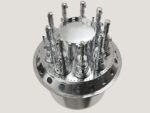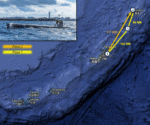Germany is set to significantly expand and modernize its ground combat capabilities with the procurement of 424 additional Boxer wheeled armored vehicles under a new €7 billion ($7.4 billion) program. The large-scale acquisition marks one of the most substantial land systems investments in recent Bundeswehr history and reflects a broader shift toward rapid deployability and NATO interoperability.
Strategic Context: From Cold War Legacy to High-Readiness Force
The German Army (Heer) has long relied on tracked platforms such as the Leopard 2 MBT and Puma IFV for its mechanized formations. However, Russia’s full-scale invasion of Ukraine in 2022 catalyzed a major re-evaluation of force posture across NATO. In response, Germany launched the “Zeitenwende” initiative—an epochal shift in defense policy backed by a €100 billion special fund aimed at reversing decades of underinvestment.
The Boxer procurement is part of this transformation. Designed for modularity and strategic mobility, the Boxer offers advantages over traditional tracked vehicles in terms of operational flexibility, lower life-cycle costs, and faster deployment via rail or road across Europe. The acquisition will bolster Germany’s ability to meet NATO force generation targets and contribute rapidly deployable units to the alliance’s eastern flank.
Boxer Platform Overview: Modularity as a Capability Multiplier
The Boxer is an 8×8 multi-role armored vehicle developed by ARTEC GmbH—a joint venture between Rheinmetall Landsysteme (Germany) and Krauss-Maffei Wegmann (KMW). It has been adopted by several NATO countries including Germany, the UK (as the Mechanised Infantry Vehicle), Lithuania, the Netherlands, and Australia.
Key specifications include:
- Combat weight: ~36 tonnes (depending on variant)
- Powerplant: MTU V8 diesel engine (~530 kW)
- Top speed: ~100 km/h on road
- Protection: STANAG Level 4 ballistic/IED protection; modular armor kits
- Crew capacity: Driver + up to 10 dismounts (APC configuration)
The platform’s hallmark is its modular mission module system. This allows rapid reconfiguration into roles such as infantry carrier (GTFz), command post (FüFz), ambulance (sgSanKfz), engineer support vehicle (PiTrp), or Joint Fire Support Team vehicle (JFST). For this procurement round, Germany is expected to acquire primarily infantry fighting vehicle variants equipped with advanced digital C4ISR suites and remote weapon stations.
Contract Details and Industrial Implications
The €7 billion contract—expected to be signed in late Q4 2025—is being negotiated between Germany’s Federal Office for Bundeswehr Equipment, Information Technology and In-Service Support (BAAINBw) and ARTEC/Rheinmetall. Deliveries are projected to begin in 2026 with completion by early 2033.
This order follows previous Bundeswehr contracts for over 400 Boxers since the early 2000s. However, this new tranche represents both an expansion in fleet size and an upgrade path toward digitized battlefield integration under Germany’s “Digitalization of Land-Based Operations” (D-LBO) initiative.
Industrial workshare will be split among Rheinmetall facilities in Kassel and Unterlüß as well as KMW plants in Munich. The program will sustain thousands of skilled jobs across Germany’s defense industrial base while also supporting future export potential—especially given rising demand from Ukraine-aligned states seeking interoperable NATO-standard platforms.
Operational Role Within German Army Structure
The newly ordered Boxers are intended primarily for use within Germany’s medium mechanized brigades—the so-called “Mittlere Kräfte.” These formations are designed around high-mobility wheeled platforms capable of rapid deployment without heavy engineering support or rail logistics bottlenecks.
This approach complements heavier tracked units like those fielding Leopard tanks or Puma IFVs while offering increased operational tempo during crises requiring fast maneuver over long distances—such as reinforcement missions along NATO’s eastern border or stabilization operations abroad.
The Boxer IFV variant may also serve as an interim solution while issues with the Puma IFV program are resolved. Despite its advanced design features—including active protection systems and networked targeting—the Puma has suffered from reliability problems during testing phases since its introduction in the mid-2010s.
NATO Interoperability and Export Synergies
The Boxer platform has emerged as a de facto NATO standard for wheeled combat vehicles due to its modularity and proven performance across multiple theaters including Afghanistan and Mali. Its adoption by several member states enhances logistical commonality during joint operations—a key tenet of NATO’s Force Structure adaptation efforts post-Ukraine invasion.
This German order may also influence other European procurement decisions. For instance:
- Lithuania recently ordered additional Boxers for its Iron Wolf Brigade
- The UK continues production under its Mechanised Infantry Vehicle program
- Slovenia selected Boxer over Patria AMV XP after extensive trials
Moreover, Rheinmetall has positioned itself aggressively for future tenders—including potential follow-on orders from Australia under LAND 400 Phase 3 if delays persist with Hanwha’s Redback IFV offering.
Conclusion: A Strategic Shift Toward Agile Ground Forces
This latest Boxer procurement underscores Berlin’s commitment to reshaping its land forces into more agile, interoperable formations aligned with modern threat environments—from peer conflict scenarios in Eastern Europe to expeditionary stabilization missions abroad.
While challenges remain—notably around sustaining parallel fleets of tracked vs wheeled vehicles—the move signals that Germany intends not just to spend more on defense but to spend smarter by investing in scalable platforms that can adapt across mission sets through modular upgrades rather than bespoke development cycles.










